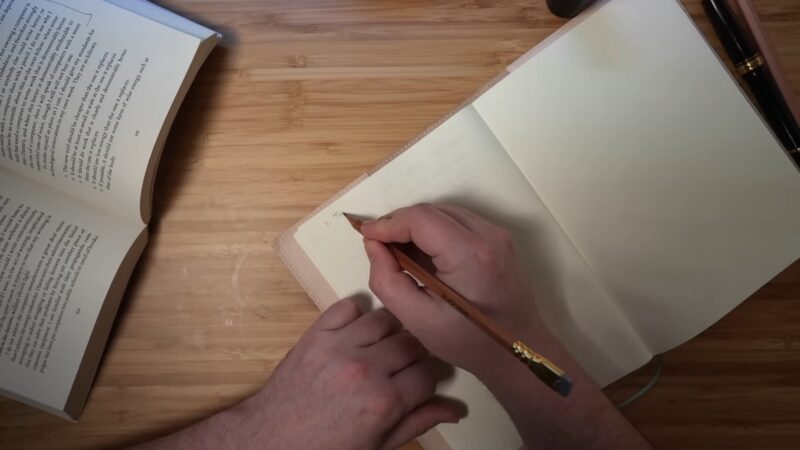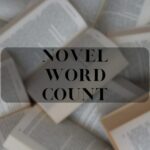Embarking on the journey of writing a novel can feel like navigating a labyrinth. But fear not, the Snowflake Method is here to illuminate your path and make the process more manageable.
So, you’re ready to don the hat of a novel writer…
Randy Ingermanson’s Snowflake Method of Writing is a beacon in the world of novel writing methodologies. It’s a compass that many aspiring authors use to navigate their creative journey. The core philosophy of the Snowflake Method is that exceptional novels aren’t simply plucked from thin air. They are meticulously designed, piece by piece, like a beautiful snowflake.
If you’re yearning to pen a captivating novel, it’s time to move away from improvisation and embrace a more strategic approach. The Snowflake Method provides a structured, step-by-step process to help you craft your masterpiece. So, let’s roll up our sleeves and dive into the world of purposeful novel writing with the Snowflake Method as our guide.
What Is The Snowflake Method Of Writing?
The Snowflake Method of writing is based around the idea that a writer begins with a simplistic deep theme and then, over time, develops and adds complexity. In other words; you start with a simple idea and then build on this idea until it transforms from a single sentence into a full-blown novel.
I am not saying that the Snowflake outline is the ‘best’ outline to write a novel. In fact, I feel many writers will be horrified at such detailed levels of planning. However, some writers will find an affinity with the Snowflake Method.
If you are a writer that plans, this article might just change your writing life!
Snowflake Outline
As you can see in this video, the best way to draw a snowflake is to start with a simple idea and build outward. Writing a novel using the Snowflake Method of Writing uses the same principle. You start small with one central idea. You then expand ‘outwards’ adding more ideas to the central idea. You keep doing this until the novel is written.
Ten-step Process for the Snowflake Method of Writing:
1. Write a One-Sentence Summary of Your Novel
This sentence will be based on your main idea or theme. An example might be: ‘A scientist travels back in time to kill Hitler.’
Don’t use character names (these will come later). However, it is ok to use descriptions. For example, the scientist in our example might be a ‘mad’ scientist.
2. Expand the Sentence to a Paragraph Describing the Story Narrative, Any Major Events, and the Ending

There’s a simple formula you can use to expand your sentence to a full paragraph. A good novel will consist of the following:
- A setup.
- Three key turning points, which the main character must overcome (this is best seen in the three-act structure).
- A conclusion.
Using this formula, we can expand the sentence to a full paragraph.
- The first sentence sets up the story.
- The second, third and fourth sentences cover each of the three turning points.
- The final sentence is the conclusion.
These first two points will help you define the structure of the story. You must now consider the role of the characters.
3. Now Consider the Main Character and Write a One-Page Summary for Each, Considering the Following Points:
- A one-sentence summary of the character’s storyline.
- The character’s motivation (what does he/she want abstractly?).
- The character’s goal (what does he/she want concretely?).
- The character’s conflict (what prevents him/her from reaching this goal?).
- The character’s epiphany (what will he/she learn, how will he/she change?
- A one-paragraph summary of the character’s storyline.
This is a vital step in the process and you should be spending between one and six hours for this step.
Character development is an essential element of your novel and any time invested now will pay off in the future.
4. Go Back to the Summary You Wrote in 2 and Expand Each Sentence Into a Paragraph
The Snowflake Method means that you are taking a simple idea and expanding it into a novel.
The next step is to take each of the sentences from Step 2 and expand them into paragraphs.
This is not a quick process, but it will form the foundation of your story and the novel you will write.
- Randy’s advice here is: ‘Take several hours and expand each sentence of your summary paragraph into a full paragraph. All but the last paragraph should end in a disaster. The final paragraph should tell how the book ends.’
5. Write a One-Page Description for Each Major Character, Which Tells the Story From Their Point of View
You will now add depth to your characters. Go back to Step 3 and write at least one page for each character. You should include as much information as possible. The better you ‘know’ these characters, the better the final novel will read.
One tip is to tell the story from the viewpoint of each character. This will allow you to see the story from their viewpoint and iron out any potential issues with motivation.
6. Expand Your One-Page Plot Synopsis Into a Four-Page Plot Synopsis
Return to the synopsis you write in Step 4 and look to build this into a more substantial synopsis.
Take each of the paragraphs and expand them into at least one page.
This is the time to address any major plot issues and get the whole story flowing.
7. Expand Your Character Descriptions From 3 Into Full ‘Character Charts’
Time to go back to your characters. For each major character, you need to create a ‘character chart’.
This should be an outline of the character and their lives. You can’t have too much detail. Some things to consider include:
- Birthdate.
- Physical description.
- History.
- Motivations.
- Life goals.
8. Using the Expanded Synopsis, Make a List of Every Scene You Will Need to Write to Complete the Novel
You are now in a position to plot out the scenes for your novel. Go back to your expanded synopsis and break the story down into scenes.
At this point, you just need to give each scene a one-line description. For example, ‘Mad scientist tests time machine’.
A scene will normally occur in one location and will see the characters changing or learning something new. A novel will typically contain between 50 and 100 scenes.
9. Using the Scene List, Write a Multi-Paragraph Narrative Description of Each Scene
Once you have a list of scenes, you can now write a description for each scene.
Include a list of characters and a description of what happens in the scene.
These descriptions should be about one paragraph in length.
10. Write Your First Draft

You now have enough to get writing. Pick a scene and start.
Randy Ingermanson One-Sentence Summaries
Randy Ingermanson has published a number of examples of one-sentence summaries:
- A young Saudi woman on the run from her family links up with a Berkeley physics prodigy who is just learning that he can see the future–Blink, Ted Dekker.
- A young servant girl in 17th-century Holland lies at the center of a marital dispute in the home of renowned painter Johannes Vermeer–Girl With a Pearl Earring, Tracy Chevalier.
- A Moscow homicide detective investigates a bizarre triple murder and runs afoul of the KGB and FBI–Gorky Park, Martin Cruz Smith.
- A boy raised in Afghanistan grows up with the shame of having failed to fight the gang of boys who raped his closest friend–The Kite Runner, Khaled Hosseini.
- A boy wizard begins his training and must battle for his life with the Dark Lord who murdered his parents–Harry Potter #1, J.K. Rowling.
- A hobbit learns that his magic ring is the key to saving Middle Earth from the Dark Lord—The Lord of the Rings, J.R.R. Tolkien.
- A eunuch in 18th century BC Egypt must survive the palace intrigues between his owner and her evil father–River God, Wilbur Smith.
- A young human girl in Ice Age Europe struggles to survive in her adoptive clan of Neanderthals—The Clan of the Cave Bear, Jean Auel.
- A stonemason in 12th-century England battles to build his life’s dream, a cathedral–The Pillars of the Earth, Ken Follett.
- A young nurse searches for the way home after time-traveling from 1945 to 1743 Scotland–Outlander, Diana Gabaldon.
- An orthodox Jewish artist struggles to reconcile his art, his religion, and his family–My Name is Asher Lev, Chaim Potok.
- A young girl watches the turmoil in her family from heaven after being raped and murdered by a neighbor–The Lovely Bones, Alice Sebold.
- An autistic savant must choose whether to accept a new treatment that would make him normal and change his identity forever–The Speed of Dark, Elizabeth Moon.
- A young girl grows up in the company of a strange time-traveling visitor who appears and disappears at random–The Time Traveler’s Wife, Audrey Niffenegger.
- A young English woman from a peculiar family is pursued by an arrogant and wealthy young man– Pride and Prejudice, Jane Austen.
- A young female astronomer discovers radio messages from alien beings in a nearby star system–Contact, Carl Sagan.
- A young boy is brutally trained in Battle School to be the general who will save humanity from alien invaders–Ender’s Game, Orson Scott Card.
- A Harvard symbologist and a female French cryptographer solve the puzzle of the Holy Grail in a race against death across Europe—The DaVinci Code, Dan Brown.
- In 1914, a Russian anarchist tries to assassinate the aristocrat who is negotiating his country’s entrance into World War I–The Man From St. Petersburg, Ken Follett.
- A brilliant young lawyer gets a fabulous job at a firm that is a cover for a Mafia money-laundering operation–The Firm, John Grisham.
- A British spy “retires in disgrace” as cover for a deeply laid plan to entrap the head of counterespionage in East Berlin–The Spy Who Came In From The Cold, John LeCarre.
- A Russian sub captain leads the Soviet navy on a merry chase while he tries to hand over the latest Soviet submarine to the Americans–The Hunt For Red October, Tom Clancy.
- An orthodox Jewish artist struggles to reconcile his art, his religion, and his family–My Name is Asher Lev, Chaim Potok.
Summary
If you wish to apply the Snowflake Method of Writing then visit Randy Ingermanson’s website to find more details. Once you’ve written your book in the desired genre, you’ll face the task of deciding on the best option for publishing.
This article about self-publishing vs traditional publishing will help you decide on what’s best for you and your book. If you are thinking about writing a short story, then the Snowflake Method of Writing might not be for you.







